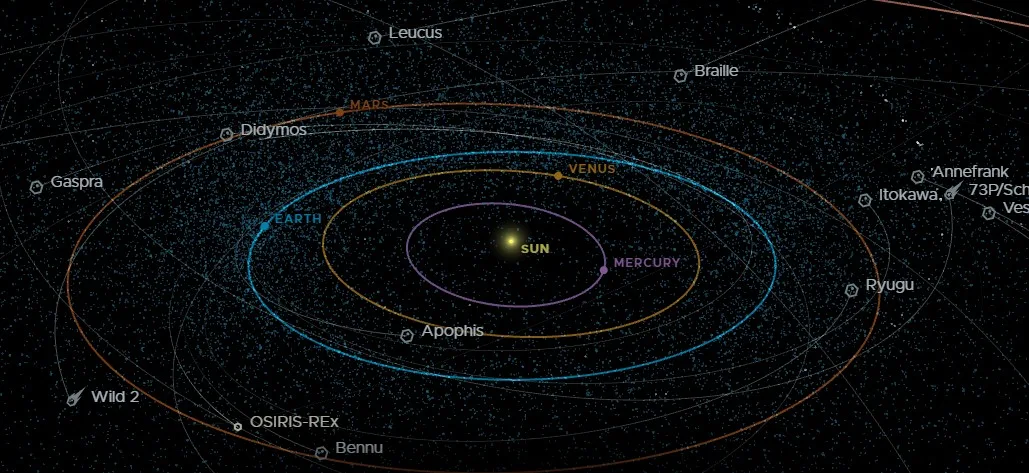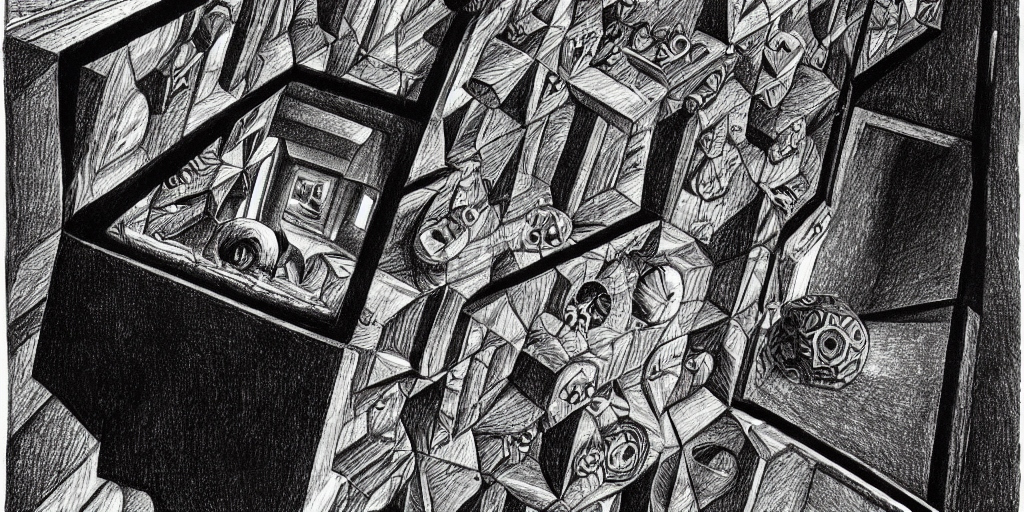What is Asteroid 2023 DW and why are some people saying it will hit the earth in 2046
Before going into the details of what Asteroid 2023 DW is, let's start by answering the most important part; NO, Asteroid 2023 DW will not hit the earth in 2046. But it will come very close to us.
The real information about the asteroid 2023 DW and its possibility of impacting the earth is the following:
According to NASA, the chance of impact is currently estimated to be, "1 in 560 chance of impact." Put another way, there is only a 0.18% chance of hitting Earth, or a 99.82% chance that the asteroid will pass harmlessly past our planet.
Now to be clear; this suggests that it could indeed impact the earth. But, because the odds are so low, it is quite misleading for the media, objective or otherwise, to report with a title that might suggest a certainty of impact.
It's also important to know that NASA provides up-to-date information on the 2023 DW risk factor, which helps clarify the chances of a real impact.
Risk corridor:
The Risk Corridor for 2023 DW known on March 3, 2023 with an observation arc of 4 days and 55 observations. The asteroid will most likely hit the Pacific Ocean. At the time of the potential impactor, the asteroid will most likely miss Earth by about 2 million km and has a 3-sigma region of uncertainty of ±8 million km. As the region of uncertainty gets smaller, the probability of impact could increase and then suddenly drop to 0.
Why does the media choose to write misleading headlines on this issue?
Well, because anxiety is one of the best ways to get people to react and pay attention. In this case, it is simply clickbaiting to get readers to visit their websites and the possibility of the user engaging with advertisements or other monetary schemes.
Clickbaiting is a popular strategy because it can be effective in driving traffic and engagement to websites and social media platforms. The goal of clickbait is to create a catchy headline or thumbnail that grabs people's attention and makes them want to click through to read more. This can be done by using provocative or sensational language, teasing a surprising or controversial story, or promising to reveal something exclusive or unknown. Like a headline about imminent death.
Online publishers and content creators often use clickbaiting as a way to increase their views and ad revenue. Sometimes this involves the use of misleading information, such as: the title or thumbnail, which may not accurately represent the content being shared.
Now that we have a much clearer understanding of that side of the issue, let's learn more about asteroid 2023 DW.
What is Asteroid 2023 DW
Asteroid 2023 DW is an asteroid recently discovered on February 26, 2023 by Georges Attard and Alain Maury in the asteroid search program in San Pedro de Atacama, in Chile.
Asteroid 2023 DW is approximately 50 meters (160 feet) in diameter) and is considered a near-Earth object (NEO), meaning it is a small Solar System body orbiting close to Earth. Asteroids that are considered NEOs are classified in the Aton Group of asteroids, named for 2062 Aten, an asteroid discovered on January 7, 1976 by American astronomer Eleanor Helin at the Palomar Observatory.
With the discovery of 2023 DW, the number of ATEN objects increases to 2,445, of which 256 are numbered, 13 are named, and 101 are classified as potentially hazardous asteroids.
How do we determine if an asteroid could impact Earth
Since asteroid impacts can have catastrophic consequences for life on Earth, it is important to monitor potentially hazardous asteroids and determine if they pose a threat. A tool used to determine the danger that an asteroid can represent is the Torino scale.
The Torino Scale is a method of categorizing the potential impact risk associated with a near-Earth object, such as an asteroid or comet. The scale was developed in 1999 by a group of scientists and is named after the city of Turin, Italy, where it was first introduced.
The Torino Scale is based on two factors: the probability of impact and the possible consequences of the impact. Here are some details of the two factors of the Torino Scale:
- Impact probability: This factor takes into account the object's size, trajectory, and other factors that affect its orbit. The impact probability is based on the probability that the object will hit the Earth. The probability is estimated by calculating the orbital path of the object and the chances that the object's path will intersect Earth's orbit.
- Potential consequences of the impact: This factor takes into account the size, speed and composition of the object, as well as the location of the impact and the population density of the affected area. The possible consequences of the impact are based on the severity of the damage that the impact could cause. Gravity is estimated by considering factors such as the mass and kinetic energy of the object, as well as the location of the impact and the population density of the affected area.
Both factors are important in assessing the potential hazard of a NEO and are used together to determine the appropriate level on the Torino scale. By considering both the probability of impact and the potential consequences of the impact, scientists can better estimate the overall risk posed by a NEO and can make informed decisions about how to respond to the potential threat.
The Torino Scale has 10 levels, ranging from 0 to 10. These are the 10 levels of the Torino Scale with additional details for each level:
- Level 0: The chance to hit is so low that no action is necessary. There is no cause for public concern.
- Level 1: A routine discovery of an object, without cause for public attention because the probability of impact is very low.
- Level 2: An object has been discovered and although its orbital path is uncertain, there is no cause for public concern as the probability of impact is still very low.
- Level 3: The chance to hit is increased, but the potential consequences are minimal or negligible. There is no cause for public concern and no action is required.
- Level 4: The probability of impact is increased and there is a small chance of global environmental damage, but the possible consequences are still minor. There is no cause for public alarm and no action is required, but control of the object must continue.
- Level 5: Hit probability is moderate, with possible regional destruction. A public alert is issued and emergency planning is initiated in areas where impact is possible.
- Level 6: The probability of impact is high, and significant regional damage is expected. A public warning is issued and emergency evacuation plans are initiated in areas where impact is expected.
- Level 7: The probability of impact is very high, and devastating global consequences are expected. Evacuation and emergency mitigation measures are carried out on a global scale.
- Level 8: Impact is certain and global devastation is expected. No specific measures can be taken to mitigate the impact.
- Level 9: Impact is certain, with global devastation guaranteed and catastrophic effects on the environment expected. Humanity as a whole is threatened with extinction.
- Level 10: Impact is certain, with global devastation guaranteed and catastrophic effects on the environment expected. The extinction of humanity is certain.
Asteroid 2023 DW currently has a rating of 1 on the Torino Scale.
It is important to note that the Torino Scale is based on probabilistic calculations and does not provide a definitive prediction of impact. However, it can help guide decision making about mitigation strategies and other actions in response to potential impact hazards.
Does the US government have a plan for the actual potential future impact of an asteroid?
Yes, the US government has plans to respond to the potential threat of an asteroid impact. In fact, NASA has a Planetary Defense Coordination Office (PDCO) that is responsible for leading the US government's efforts to detect, track, and mitigate the potential impact of NEOs, including asteroids.
PDCO works closely with other Federal agencies, international partners, and the scientific community to develop and implement plans to respond to potential asteroid impacts. The plans include a variety of activities, such as monitoring and tracking potentially hazardous objects, conducting research on the characteristics of near-Earth objects, and developing technologies to deflect or deflect an object that may be on a collision course with Earth.
In the event a potentially hazardous object is detected and deemed to pose a significant impact threat, the PDCO and other agencies would work together to implement a response plan. This could include launching a space mission to divert or divert the object, evacuating areas that may be affected, or taking other steps to mitigate the effects of an impact.
It is important to note that the probability of an asteroid impact causing significant damage is very low, and no asteroid is currently known to pose a significant threat to Earth in the foreseeable future. However, NASA and other agencies are actively monitoring the skies for potentially hazardous objects and are working to ensure they are prepared to respond if necessary.
Can we deflect or destroy an asteroid with missiles or nuclear weapons?
The use of missiles or nuclear weapons to deflect or destroy an incoming asteroid is a topic of ongoing debate among scientists and experts. While the use of such weapons could theoretically be effective in altering an asteroid's trajectory, there are also significant risks and potential drawbacks to consider.
These are some of the main factors to consider:
- Deflection vs. Destruction: An important distinction to make is between deflecting an asteroid, which involves altering its trajectory enough to avoid an impact with Earth, and destroying an asteroid, which involves break it into pieces or vaporize it completely. While some proposals have focused on destruction as a means of mitigating impact risk, most experts believe diversion is a more viable option.
- Size Matters: The effectiveness of any deflection or destruction strategy would depend heavily on the size and composition of the asteroid in question. Smaller objects could potentially be deflected or destroyed with existing technology, while larger or denser objects may require more advanced or unproven methods.
- Risks and Side Effects: The use of missiles or nuclear weapons to deflect or destroy an asteroid could have significant risks and side effects. For example, a nuclear explosion could create a shower of smaller asteroid fragments that could still pose a threat to Earth. Furthermore, the use of nuclear weapons in space is highly controversial and could have negative implications for international relations.
Although the use of missiles or nuclear weapons to deflect or destroy an asteroid may be a tempting solution, it is important to carefully consider the potential risks and drawbacks before taking that approach. Currently, most efforts to develop asteroid deflection strategies focus on less invasive methods, such as using spacecraft to deflect an asteroid from its course or using gravity to alter its trajectory over time.
Resources:
- CNEOS: NASA's center for calculating the orbits of asteroids and comets and their impact probabilities on Earth: At CNEOS, NASA constantly reports on potential asteroid impacts. You can see his posts at
- Eyes on Asteroids: see an interactive virtual map of the solar system and its asteroids.
If the links are broken or out of date, please visit NASA or its equivalent, if you can, for more information.











